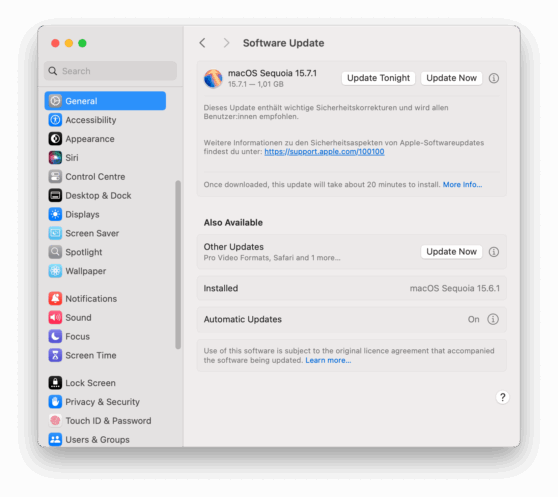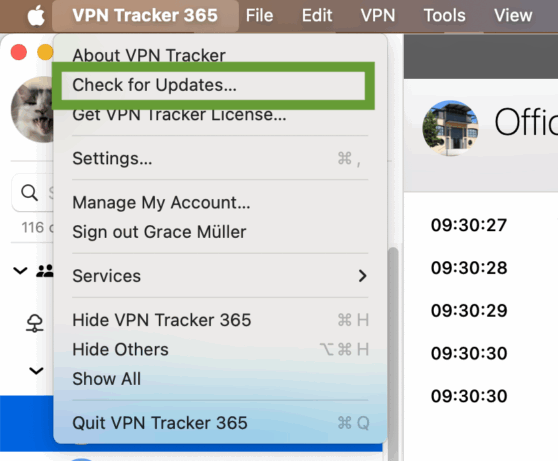It’s Monday morning, your coffee is brewing, and you’re settling into your home office VPN setup for the week. You sit down, ready for your first meeting, but your Mac VPN won’t connect. Files, emails, and internal tools are out of reach, and your productivity grinds to a halt. Avoiding moments like this is exactly why a routine VPN check ahead of time can save you hours of stress.
This 5-step VPN setup checklist for Mac and iOS users will guide you through the key things to test and maintain, ensuring your VPN stays reliable. With practical examples and tips, it keeps your connection smooth and your home office workflow uninterrupted, wherever you’re working.
Getting Started: Home Office VPN Setup
If you already have your VPN set up, you can skip straight to the 5-step checklist.
If you haven’t set up your VPN yet, now is the perfect time to get everything ready before the workweek begins. A proper VPN setup ensures secure access to your office network, protects sensitive data, and avoids interruptions when working from home or a hybrid setup. If you're new here, check out our Quick Start Guide for help getting set up.
VPN Tracker: A Home Office Best Practice
For remote and hybrid workers, having a reliable home office VPN setup across all your devices is key. VPN Tracker for Mac and iOS provides secure access to your office network, keeps your connections consistent, and reduces the chance of unexpected downtime. Using a trusted VPN solution like VPN Tracker makes it easy to test, maintain, and switch between devices without worrying about lost connections or configuration errors.
Here are some of the ways VPN Tracker helps Apple users stay productive and secure:
- One account and app for all your connections — no need to juggle multiple VPN apps or profiles
- Sync across devices — your Mac, iPhone, and iPad stay connected with the same settings, so switching devices is seamless
- Connection Checker tests if your home office VPN setup will work on your network to catch issues early and avoid downtime
- Infiniconnect automatically reconnects your VPN if the connection drops, keeping you online without interruption
- Always up to date — supports the latest macOS and iOS versions to ensure smooth and secure connections
Use the VPN Tracker connection checker to test your home office VPN setup
5-Step Checklist for Home Office VPN Setup
1. Check VPN Setup for Updates
Keeping your home office VPN setup up to date is simple but crucial for smooth and reliable connections. macOS updates can reset network permissions, and VPN apps often release fixes to prevent connection issues. VPN Tracker for Mac, for example, regularly releases updates to stay compatible with the latest macOS versions, ensuring your workflow at home stays uninterrupted.
Taking a few minutes to check your Mac and install any updates before the week starts can save time and reduce frustration, making your Monday morning much smoother.
How to check your VPN setup in under 2 minutes:
- On Mac: go to System Settings > General > Software Update

Check if your Mac needs an update before you start your working week
- In VPN Tracker for Mac: select VPN Tracker > Check for Updates to see if you're using the latest version

2. Test Your Connection from Home
Don’t wait for a critical meeting to find out your VPN won’t connect. Before your workweek begins, test access to shared drives, internal tools, or intranet pages from your home office. This helps you spot potential issues early and avoid last-minute headaches.
Examples from real users:
- A remote worker tested their new VPN setup Sunday evening and realized their router was blocking the connection. Fixing it then saved an hour on Monday morning.
- Another worker noticed slow speeds while everyone else in the household was streaming. Switching to a different Wi-Fi band improved VPN performance immediately.
- One hybrid worker confirmed access to a critical internal tool using their iPad while on a coffee shop hotspot, ensuring smooth workflow when working away from home.
Our tip: Use Connection Checker. If you’re strapped for time on Sunday but still want to ensure a productive start to your week, VPN Tracker’s Connection Checker is a quick and reliable way to verify your VPN setup in seconds:
- Open VPN Tracker on your Mac
- Go to Tools > Open Connection Checker
- Make sure you're connected to the network you will be using for your home office VPN setup, then hit Start Connection Check
- Check the results: the tool will flag any connections which may have connectivity or compatibility issues with your home network
- If a problem appears, troubleshoot early by adjusting your Wi-Fi, firewall, or VPN settings before your workday begins. Or, make a note for your IT support team so you can tackle the issue right away
![]() By taking a few minutes to test your connection — either manually or with Connection Checker — you can start Monday confident that all your home office VPN connections will work reliably, no matter what your network looks like.
By taking a few minutes to test your connection — either manually or with Connection Checker — you can start Monday confident that all your home office VPN connections will work reliably, no matter what your network looks like.
3. Verify Login Credentials
One of the most common reasons VPN connections fail is incorrect or outdated login credentials. Before your workweek starts, make sure your username, password, and any required certificates or profiles are up to date. Checking now can save frustration during important calls or deadlines.
Quick tips for home office users:
- Test your login on each device you plan to use — Mac, iPhone, and iPad.
- If you use VPN Tracker, ensure your saved credentials are up to date in the app. This keeps your connections consistent across devices.
- For certificate-based VPNs, make sure any profile files are imported and valid on your Mac and iOS devices.
Real-life example: One remote worker discovered their Mac login credentials had expired over the weekend, while their iPhone still had the old cached password. Testing both devices ahead of time prevented a last-minute scramble during a Monday morning team meeting.
4. Review Firewall and Network Settings
Sometimes VPN connections fail because of firewalls, antivirus software, or network restrictions. Checking your home network and security settings can prevent unexpected interruptions during the workday.
Practical home office tips:
- On Mac, go to System Settings > Network and review active VPN profiles
- Temporarily disable any third-party firewall or antivirus software to see if it’s blocking the VPN
- Use VPN Tracker’s connection log — the app can notify you if a network issue is preventing a connection
- If you’re on Wi-Fi, try connecting to your main network instead of a guest network, or briefly restart your router to refresh the connection
5. Set Up VPN Tracker on Your iOS Devices
If you move between devices and locations, your VPN should move with you. VPN Tracker for iOS lets you securely access office resources from your iPhone or iPad.
Instantly unlock VPN access for your iOS devices:
Just download the VPN Tracker iOS app and log in with the same credentials as your Mac – your VPN connections will be saved in your account, ready to access on iPhone and iPad.
Get VPN Tracker for iPhone and iPad in the iOS App Store
This is especially useful for hybrid workers who might split their day between home and office and work on the go – for example using an iPhone to access work systems on the train or using an iPad when meeting externally with clients.
Final Checks and Tips
After completing this checklist, your VPN should be ready to support your home office workflow. Run tests during peak usage hours, note any errors, and troubleshoot before your next big task or meeting. These steps help you stay productive and avoid unexpected downtime.
If you’re looking for a reliable way to manage multiple VPN connections across Mac and iOS, VPN Tracker offers easy-to-use tools to keep your setup secure and synchronized across devices, no matter where you’re working.
Your VPN Tracker benefits
- Secure remote access to your company network, home office, and Smart Home - all in one app
- Use your own VPN gateway
- Ready-made profiles for 300+ VPN devices
- Configuration wizard for a smooth and fast setup
- For Mac, iPhone, iPad
- Discover all features →